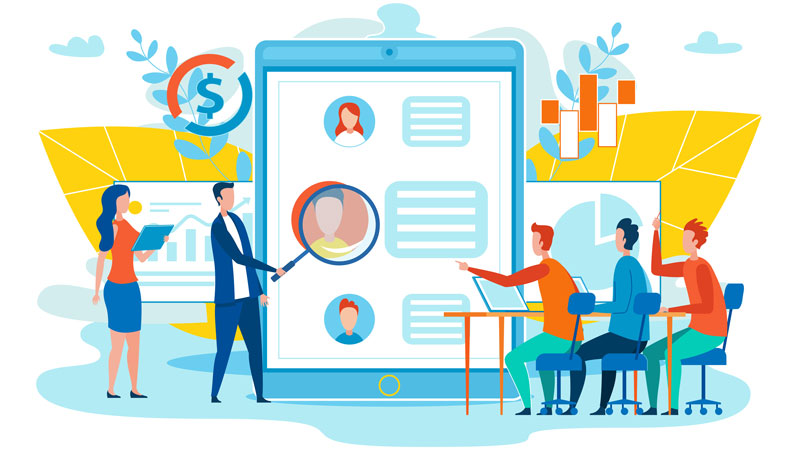
Your organization embraces a culture of quality. You seek continuous improvement.
At some point the lean practice came to make sense to you. The possibilities of seeing the whole. The rationale of starting with the customer and working your way back into the organization from there to create the value stream. The energy that comes from getting everyone on the same page in terms of the problem to be solved: the waste to be removed. The satisfaction in helping people more fully realize their potential by becoming better problem solvers.
You began your lean journey. You spent a good deal of time and energy on understanding the principles and where people had applied them to be successful. You spent more time than you thought possible getting people on board.
You convened your first value stream mapping exercise with a group of “friendlies.” Colleagues who would cut you some slack as you got a handle on what it means to convene a group of people from across the organization to create a visual understanding of one the critical value streams and the opportunities for improvement. You found yourself rapidly ascending the learning curve. More people came along with you as they started to see the value of the approach.
At some point you were surprised to learn that, in the past year, your team and you had facilitated a couple hundred value stream mapping exercises. You found yourself in “train the trainer” mode to scale the approach and the capability —coaching, which you found to be the most rewarding part of the work.
What Comes Next?
Today, you find yourself with practical understanding of the value of the lean approach, along with its limitations. You have experienced both success and failure in using the methodology.
Identifying what to focus on next remains as challenging as ever—perhaps more so, as your efforts to solve problems seems to have the effect of uncovering more problems.
Value streams are, by their nature, supposed to persist (figure 1). Yet, the paper artifacts created by the value stream mapping exercises themselves seem transitory. A lot of hard work and effort seems to get rolled up and tucked away in the supply closets. You find that minimizing waste brings with it its own occurrences of waste.
What if you could use a digital capture tool for wall maps which was fast and had automated lean analysis and visualization built-in (figure 2)? What if the tool had the right variables, calculations and charts for each type of value stream (e.g., production, services, supply network)? And, what if the tool also did a lot of the “side” calculations (e.g., Kanban, Spaghetti, EPEI) associated with the lean methodology? What if you could apply these capabilities during the event to help the team see the whole, generate better ideas, and validate their impact?

Further, what if you could get a wider, virtual crowd engaged on which value streams to improve and then to help troubleshoot waste within the value stream as it was identified on the map?
Your organization, to the credit of its people, has grown organically and through acquisition. Getting people in one room—all the people who, collectively, see the whole—has become more challenging. Several of your team have achieved elite status on their preferred airline. Is that a good sign?
What now? How do you continue to improve continuous improvement?
A few our “early adopter” clients, by applying creativity to their problem-solving skills, have started to experiment with and derive value by cross-pollinating their practices of innovation and quality. We share a simple example below.

Figure 3: How do you continue to improve continuous improvement?
A few our “early adopter” clients, by applying creativity to their problem-solving skills, have started to experiment with and derive value by cross-pollinating their practices tied to innovation and continuous improvement. We share a simple example below by way of describing the three main challenges they overcame.
Challenge One: Finding Your Focus
Lean practitioners are confronted by an overabundance of problems or opportunities to improve. We find ourselves regularly surprised—although perhaps we should know better by now—when the head of a continuous improvement initiative observes that they would find value simply in having the reassurance that the organization is working on the right problem.
The concern is understandable. Large organizations face a material, fixed overhead tied to any sort of initiative. Think about the travel tied to convening a value stream mapping exercise, along with the costs associated with experimenting with ways to solve the problem in question.
With that, several clients have taken to the practice of mining Planview IdeaPlace for ideas and inspiration on where to focus their efforts. At times, they can be explicit with the approach by asking their community questions such as, “What problem, were we to pursue it together, might lead to authentic breakthroughs relative to topic X?” At times, they can be more organic and simply look for trends by interrogating the tag or word cloud Planview IdeaPlace provides (figure 3). People who pursue this approach get more value from their investment in Planview IdeaPlace: Planview IdeaPlace comes to serve as both a means to solve the problem at hand as a source of inspiration for the problem worth solving.

Challenge Two: Going to the Gemba with Everyone
Reaching a shared understanding of the problem to be solved is invaluable, particularly when many people contribute to the associated value stream. Think about your typical production environment, for example, which may involve thousands of people across a set of plants distributed geographically.
Clients find that their biggest financial commitment to quality in the near term is the mundane, early decision to arrange for the critical stakeholders to be in the room together to develop the value stream map so that they can identify opportunities to improve in a realistic context. Even then, some number of people cannot participate because of budget and scheduling conflicts.
The lack of representation can lead to inconsistent and uneven results across facilities.
With that, several clients have begun the practice of digitally capturing their value stream maps in real time, in concert with the development of the physical map on the wall, by using a capability such as the eVSM software. They then publish a representation of the eVSM map on Planview IdeaPlace so that everyone involved with the value stream can share their perspective on whether (a) the map reflects reality and (b) the possibilities for improvement. Do they agree with the placement and the number of the kaizen starbursts (figure 4)?

A journey can take you down familiar paths. A journey, too, can take you into new territory. In time, people come to value the new experience—what’s around the next bend in the road.
We find that the same sentiment holds true for people on their lean journey. They tell us that, over time, their value stream mapping exercises do in fact help the organization identify and resolve the low-hanging fruit: problems that are clear and more straightforward to solve.
What’s next? How might we seek authentic transformation as part of our efforts to develop a quality?
It’s a mistake to think that continuous improvement means innovating at the margins, exclusively.
In this case tying a collaborative innovation challenge in Planview IdeaPlace to a Kaizen starburst, as capture in eVSM, can yield a lot of benefit. Making the Planview IdeaPlace connection offers a couple advantages…
- The practitioner can apply what they already know about posing questions with high transformative potential to get the desired, far-horizon perspective.
- The practitioner can invite a larger, more diverse audience to participate in the inquiry—a group beyond the usual suspects for whom the problem and the set of possible solutions has become well known.
Closing Thoughts
Organizations seek multiple, beneficial cultural attributes that are related to one another and not exclusive to one another. They seek a culture of innovation and a culture of quality.
The magic—the step-level benefits—comes from finding ways to thoughtfully mix and match the underlying, enabling practices: in this case, the practice of collaborative innovation with the lean practice.
Ask yourself as a lean practitioner…
- How do I know I am solving the right problem?
- How do I help my people see the quantitative effect of solving certain problems in certain ways, based on a consistent, valid way of solving equations tied to my value streams?
- How do I find the truly transformative ideas that I seek as part of my lean journey?
- How do I get the greatest return on convening groups of people to do value streaming many times over during the year? Does consistency across sites and plants matter to me?
About the Authors
Dilesh Patel serves as the CEO of eVSM. eVSM is the leading provider of value stream mapping software to some of the world’s largest companies including Bosch, Parker Hannifin, Emerson, Procter & Gamble, Quest Diagnostics, General Mills and more.
Doug Collins serves as Chief Solutions Architect for Planview IdeaPlace, Inc. In this role Doug leads the effort by which Planview IdeaPlace puts its collective self in the shoes of the customer to understand their point of view, the problems they are trying to solve, and the value they can derive from the products or services the organization offers.




